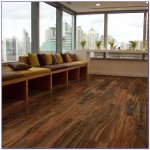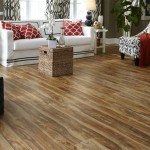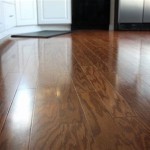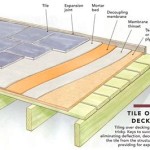Engineered Wood Flooring vs. Hardwood Laminate: Costs and Considerations
Choosing the right flooring for your home can be a daunting task, with endless options and varying costs to consider. Two popular choices often top the list: engineered wood flooring and hardwood laminate. Both offer the beauty and warmth of real wood, but with distinct differences in materials, installation, and overall cost. Understanding the pros and cons of each option, along with their associated costs, is crucial in making an informed decision.
Engineered Wood Flooring: Durability and Elegance
Engineered wood flooring consists of multiple layers of wood, with a top layer of real hardwood veneer. This layered construction provides greater stability and dimensional stability compared to solid hardwood. The top layer, usually ranging from 1/16 to 1/4 inch thick, offers the same appearance and feel as solid hardwood, allowing for sanding and refinishing.
Engineered wood flooring is typically more expensive than laminate, with prices ranging from $5 to $15 per square foot for materials alone. Factors influencing cost include wood species, thickness, finish, and brand. While the initial investment is higher, engineered wood offers several advantages, such as:
- Durability: Engineered wood is less susceptible to warping, shrinking, and expanding due to moisture fluctuations, making it suitable for areas with varying humidity levels.
- Stability: Its layered construction enhances stability, making it ideal for installations over concrete subfloors or in areas with uneven surfaces.
- Refinishable: The top layer of real wood allows for sanding and refinishing, extending the lifespan of the flooring and enabling you to refresh the look over time.
- Environmental Considerations: Engineered wood often uses sustainably harvested wood, reducing environmental impact.
Hardwood Laminate Flooring: Affordability and Versatility
Hardwood laminate flooring is a synthetic option that mimics the look and feel of real wood at a fraction of the cost. It consists of a core of high-density fiberboard, overlaid with a photographic image of wood grain and coated with a durable, wear-resistant layer. Laminate flooring is generally the most affordable choice, with prices ranging from $2 to $8 per square foot for materials.
While laminate flooring does not offer the same authenticity or refinishing potential as engineered wood, it boasts several appealing features, including:
- Affordability: Laminate flooring provides a cost-effective alternative to real wood, making it a budget-friendly option for large areas.
- Water Resistance: Certain laminate flooring varieties are designed with water-resistant cores, making them suitable for kitchens, bathrooms, and other areas prone to moisture.
- Variety: Laminate flooring comes in a wide range of styles, colors, and textures, offering versatility in matching your design aesthetic.
- Easy Installation: Laminate flooring often utilizes a click-lock system, simplifying installation and making DIY projects more feasible.
Cost Considerations: Beyond Materials
While material cost is a significant factor, it is crucial to consider the overall cost of installation, including labor, subfloor preparation, and accessories. Engineered wood flooring installation typically involves a higher labor cost compared to laminate, as it requires skilled professionals for proper installation and finishing.
Other contributing factors to the overall cost include:
- Subfloor Preparation: Uneven or damaged subfloors may require additional preparation, adding to the installation cost.
- Underlayment: A moisture barrier or underlayment can be necessary depending on the subfloor and chosen flooring type, adding to the overall expense.
- Molding and Trim: Matching molding and trim can enhance the aesthetic, but contribute to the total cost.
Ultimately, the choice between engineered wood flooring and hardwood laminate depends on individual budget constraints, design preferences, and desired longevity. While engineered wood offers durability and refinishing potential, laminate provides affordability and versatility. Carefully weighing the pros and cons, along with the associated installation costs, will help you make an informed decision that aligns with your specific needs and preferences.

Engineered Hardwood Vs Laminate Flooring

Hardwood Vs Engineered Wood Flooring Which Is Better Bessemeter

Laminate Flooring Vs Engineered Hardwood Pros And Cons

Solid Vs Engineered Hardwood Which Is Better

Engineered Wood Flooring Vs Laminate Cost

Engineered Hardwood Vs Laminate Flooring

Engineered Hardwood Floors Vs Laminate Find The Best One

North America Residential Wood Flooring Market Ysis Forecast 2027

Engineered Wood Flooring Vs Laminate Pros Cons And More

Solid Vs Engineered Hardwood Which Is Better







